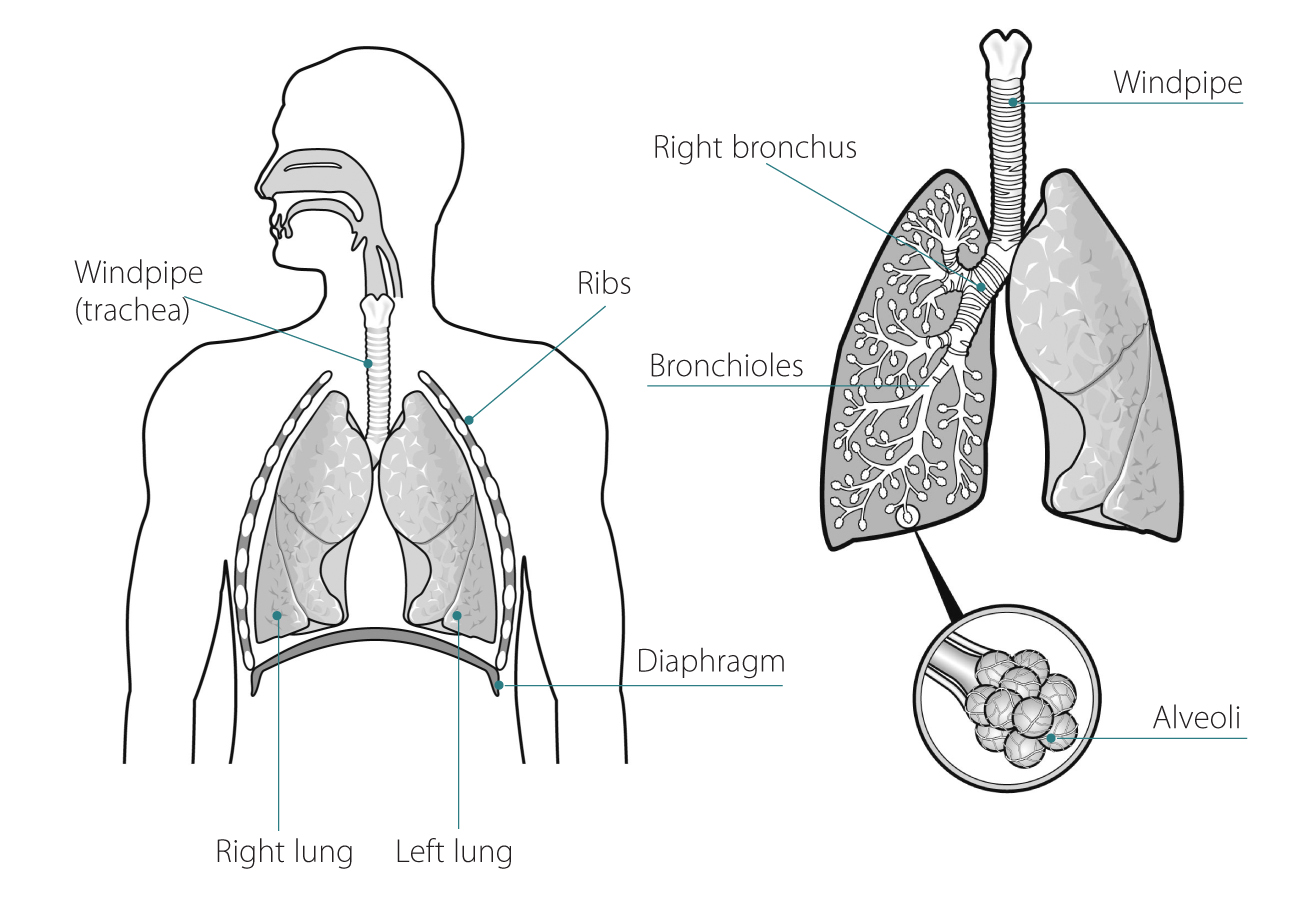This is a tool provided by the Irish Cancer Society for information only it is not intended to replace a consultation with your doctor.
Lung Cancer
Lung cancer is the 4th most common cancer in Ireland, with almost 2,600 people being diagnosed each year. It usually affects people over the age of 50.
Detecting cancer early
Learn about changes to look for when checking your body for early detection, and how cancer is usually diagnosed.
Treatments
Lung cancer can be treated with surgery, drug therapies and radiotherapy, depending on the type and where it is found.
What is leukaemia?
Leukaemia is cancer of your white blood cells and bone marrow. Bone marrow is the place where blood cells are made in your body. With leukaemia, immature blood cells divide quickly and do not grow into mature cells. These immature cells crowd your bone marrow and prevent it from making normal healthy cells.
Read more about leukaemia and how blood cells are made.
Leukaemia can be divided into two main groups depending on how fast the disease develops: Acute leukaemia develops quickly, whereas chronic leukaemia develops more slowly. The word ‘acute’ does not refer to how successful the treatment will be.
The type of leukaemia also depends on which kind of white blood cell is affected. There are many different types of white blood cells. These include myeloid and lymphoid cells. Myeloid cells develop into red blood cells, white blood cells and platelets. Lymphoid cells develop into white blood cells called lymphocytes. As a result, there are 4 types of leukaemia:
What are the lungs and what do they do?
The lungs are sponge-like organs in your chest. They allow our bodies to use oxygen by breathing. Your right lung is slightly bigger than your left and has 3 areas called lobes. Your left lung has 2 lobes. The area between the 2 lungs is called the mediastinum. It holds the heart, the oesophagus (food pipe), the trachea (windpipe) and many lymph nodes.

When you breathe in, your bring air into your lungs. Air passes from your nose or mouth through your trachea (windpipe).
From there it divides into 2 airways: the right and left bronchus, which each connect to a lung. The bronchi divide into smaller tubes called bronchioles. Air passes through these bronchioles and into tiny air sacs called alveoli.
The alveoli allow oxygen from the air to pass into your bloodstream when you breathe in. The bloodstream carries oxygen to the cells in your body. The cells need oxygen to live and carry out everyday functions. Carbon dioxide is a waste gas made during cell activity, and your body must get rid of it. Carbon dioxide moves from your bloodstream into the alveoli and leaves your body when you breathe out.
Online Lung Health Checker
How healthy are your lungs?
Take this short quiz and find out more about staying healthy and the signs of lung cancer.
Secondary cancer in the lung (lung metastases)
Sometimes cancer spreads to the lungs from somewhere else in your body, for example, from the breast or bowel. This is treated differently to cancer that starts in the lung (primary lung cancer).
If you want to know about another cancer type that has spread to the lung (metastatic cancer), you can read about metastatic cancer or reach out to us.
Continue reading about Lung Cancer
Our Survivor Support programme we can match you with a volunteer who has gone through a similar experience.
If you’re finding it difficult to get to and from treatments, we may be able to ease some of the strain of travelling to and from your appointments.
